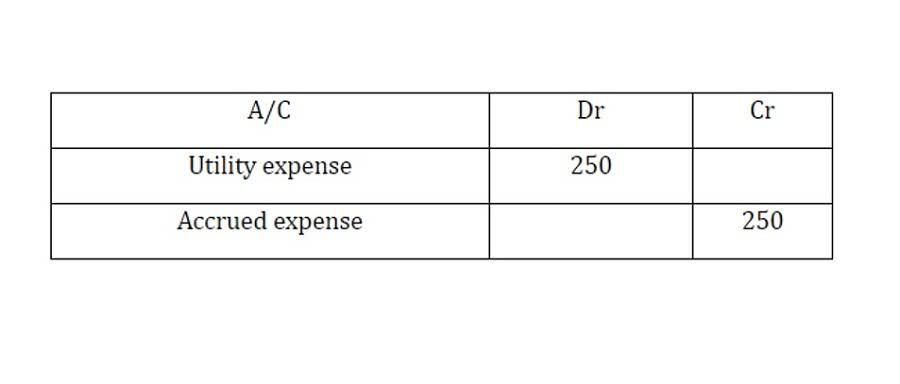
The textbook definition of working capital is defined as current assets minus current liabilities. By using changes in working capital in conjunction with other financial metrics, companies can make more informed decisions about cash management, operations, taking out working capital loans and investments. At Swoop, we Sales Forecasting understand that managing and tracking changes in working capital can be challenging for small and medium-sized businesses. That’s why we offer solutions to help you stay on top of your finances and improve your cash flow. Cash flow represents a comprehensive snapshot of an organisation’s financial liquidity. In simpler terms, it quantifies the movement of money into and out of a business, encompassing various financial assets like cash, checks, and account balances.
Using Change in Working Capital to Calculate Warren Buffett’s Version of Free Cash Flow: Owner Earnings

Choose CFI for unparalleled assets = liabilities + equity industry expertise and hands-on learning that prepares you for real-world success. First of all, we are talking about non-cash or operating-working-capital here. I’ve talked about this in Part 1 of this series so if you’re not familiar with it, I suggest you go and read it first. After arriving at the Net Income on the Income Statement, there are some adjustments that need to be made to find out how much cash the company is really making. On Part 1 of this series, we’ve taken a look at the difference between regular Working Capital and Non-Cash Working Capital, negative Working Capital and the working capital management.
Understanding Change in Working Capital

As for accounts payables (A/P), delayed payments to suppliers and vendors likely caused the increase. It’s important to note that different industries and businesses may have varying working capital requirements. As we can see, the Accounts Receivable decreased by $8.094B, the Inventories grew by $1.006B, the Vendor non-trade Receivables decreased by $14.616B and the “Other current and non-current assets” grew by $717M. Until the company sells that ice-cream, the income statement won’t be revealing anything.
What is change in working capital?
- Forecasting helps estimate how these elements will impact current assets and liabilities.
- The market for the inventory has priced it lower than the inventory’s initial purchase value as recorded in a company’s books.
- It shows a company’s liquidity, operational efficiency, and overall financial health.
- Double Entry Bookkeeping is here to provide you with free online information to help you learn and understand bookkeeping and introductory accounting.
- In other words, there are 63 days between when cash was invested in the process and when cash was returned to the company.
- Because it didn’t actually pay for those beers, it recorded that amount on its balance sheet as Accounts Payable.
That can indicate that a company isn’t utilizing its excess cash as effectively as it should to generate growth. To calculate working capital, subtract current liabilities from current assets. If a company borrows $50,000 and agrees to repay the loan in 90 days, the company’s working capital is unchanged.
Businesses must, therefore, have a clear understanding of both in order to ensure smooth business operations. How do we record working capital in the financial statementse.g I borrowed 200,000.00 Short term long to pay salaries change in working capital and other expenses. On average, Noodles needs approximately 30 days to convert inventory to cash, and Noodles buys inventory on credit and has about 30 days to pay. The three sections of a cash flow statement under the indirect method are as follows. A company may elect to increase its inventory levels in order to improve its order fulfillment rate.
- We have empowered the world’s leading companies, like Danone, HNTB, Harris, and Konica Minolta, to optimize their cash forecasting accuracy, make decisions faster with real-time bank data, and reduce bank fees.
- Loans of $250K are only approved for customers with strong credit profiles and sufficient verified monthly revenue.
- It tells you how much money the company has available to pay employees, suppliers, and other day-to-day business needs.
- Conversely, a negative working capital balance implies that a company’s current liabilities exceed its current assets, which may indicate financial difficulties and an increased risk of defaulting on payments.
- A positive working capital balance indicates that a company has more current assets than current liabilities, suggesting it has sufficient resources to meet its near-term financial obligations.
- If the purchasing department opts to buy larger quantities at one time, it can lower unit prices.
How to Calculate Working Capital
For example, if a company has $100,000 in current assets and $30,000 in current liabilities, it has $70,000 of working capital. This means the company has $70,000 at its disposal in the short term if it needs money for any reason. Working capital is the difference between a company’s current assets and its short-term liabilities. If changes in working capital are positive, the change in current operating liabilities will increase more than the part of the current assets. As a general rule, the more current assets a company has on its balance sheet relative to its current liabilities, the lower its liquidity risk (and the better off it’ll be). By implementing these strategies and practices, businesses can optimize their working capital, improve cash flow, and enhance overall financial performance.
Taken together, this process represents the operating cycle (also called the cash conversion cycle). Suppose an appliance retailer mitigates these issues by paying for the inventory on credit (often necessary as the retailer only gets cash once it sells the inventory). In other words, there are 63 days between when cash was invested in the process and when cash was returned to the company. Therefore, the working capital peg is set based on the implied cash on hand required to run a business post-closing and projected as a percentage of revenue (or the sum of a fixed amount of cash). On the subject of modeling working capital in a financial model, the primary challenge is determining the operating drivers that must be attached to each working capital line item. Chartered accountant Michael Brown is the founder and CEO of Double Entry Bookkeeping.

Changes in inventory
- But, efficient inventory management strategies, such as maintaining just-in-time inventory, can help minimize this impact by keeping stock levels aligned with demand.
- At the very top of the working capital schedule, reference sales and cost of goods sold from the income statement for all relevant periods.
- Understanding how changes in working capital impact a company is essential for both managers and investors.
- The metric known as the current ratio can be useful as well when assessing working capital.
- The calculator allows users to determine how the net working capital has changed over a specific period, providing valuable insights into a company’s operational efficiency, cash flow, and overall financial health.
- If a company obtains a long-term loan to replace a current liability, current liabilities will decrease but current assets do not change.
If the purchasing department opts to buy larger quantities at one time, it can lower unit prices. Changes in working capital are often used by investors and lenders to assess the health and value of a business. Read on to learn what causes a change in working capital, how to to calculate changes in working capital, and what these changes can tell you about your business. This content may include information about products, features, and/or services that may only be available through SoFi’s affiliates and is intended to be educational in nature. SoFi has no control over the content, products or services offered nor the security or privacy of information transmitted to others via their website. We recommend that you review the privacy policy of the site you are entering.
- Several factors like seasonal demands and adjusting non-operating items influence the calculation of change in working capital.
- Managing these changes effectively is crucial for ensuring long-term business success.
- They don’t include long-term or illiquid investments such as certain hedge funds, real estate, or collectibles.
- Generally, a working capital ratio of less than 1.0 is an indicator of liquidity problems, while a ratio higher than 2.0 indicates good liquidity.
It is an essential component of working capital, which is the amount of capital that a business has available to meet its short-term obligations. Measuring changes in working capital can provide valuable insights into a company’s liquidity, operational efficiency, and overall financial health. Change in working capital is the difference in a company’s net working capital between two accounting periods.
